Yoshihiko Ueda has been at the forefront of commercial photography for many years and has put out numerous original works as well. Possessing boundless energy, he also plans and directs photo exhibitions and oversees the publication of photography collections.
We spoke with Mr. Ueda about his path to this point and the origins of his stylish works that fascinate so many people, his original worldview, and his ideas.
I've enjoyed drawing pictures since I was small, and I had a premonition of sorts that I would wind up creating things. Having said that, when it came time for university, I lost my mind and enrolled in law school, which was completely nonsensical for me. A while after starting at law school, I suddenly came back to my senses and asked myself, ‘What am I doing?' I quit soon after that and spent the next two years or so wondering about without a steady job. I have an older sister, and one time we were talking in a coffeehouse, when she asked me, “What is it that you want to do?” And I replied, naturally enough, that I wanted to create, though I wasn't clear on what. Out of the blue, my sister said, “What about photography?” And in that moment, it hit me like a flash: ‘Photography … that might be a lot of fun.' It was like it was handed down to me on parchment. I've been going at it full tilt ever since.
I would often go into bookstores in those days and just stand and read things. In the racks in front of one bookstore, there was a magazine called The Sun, and as I flipped through the pages, I caught sight of a photo of Paris taken by Kishin Shinoyama. It was a dark, ominous picture of a staircase in a low-lying part of Paris, and I thought it was amazing. When I had that talk with my sister, I immediately thought of that photo.
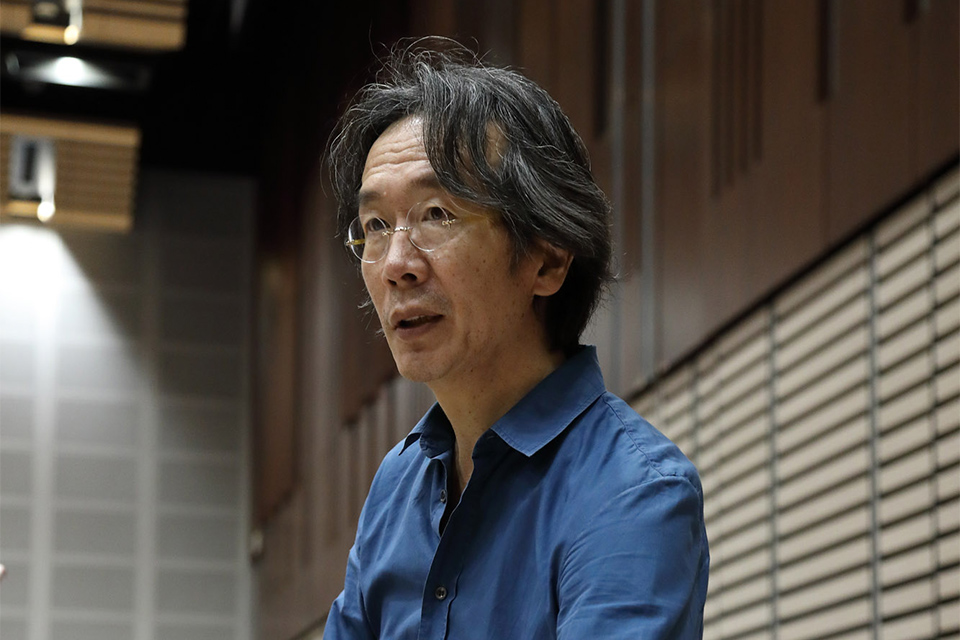
Perhaps. After discovering my purpose, so to speak, I enrolled in a school for photography [Visual Arts Osaka] and found myself abruptly immersed in the world of photography. Later, I worked as an assistant for the photographers Masanobu Fukuda and Taiji Arita for about a year each, and then I went out on my own.
I had learned the mechanics of taking pictures while a student. I took street photos in my student days, oftentimes lugging around a large-format 4 x 5 camera. It was an exceptionally unwieldly camera. I would stare at things through the viewfinder for one or two hours at a time while shooting. My relationship with photography, right from the get-go, has never been casual. What I mean by that is I found it uncomfortable and the footwork was horrible, partly owing to the size of the camera. The upside of this was it made me think, inside the viewfinder, long and hard about the things and events I was capturing in the photograph. I believe this experience instilled this kind of approach in me.
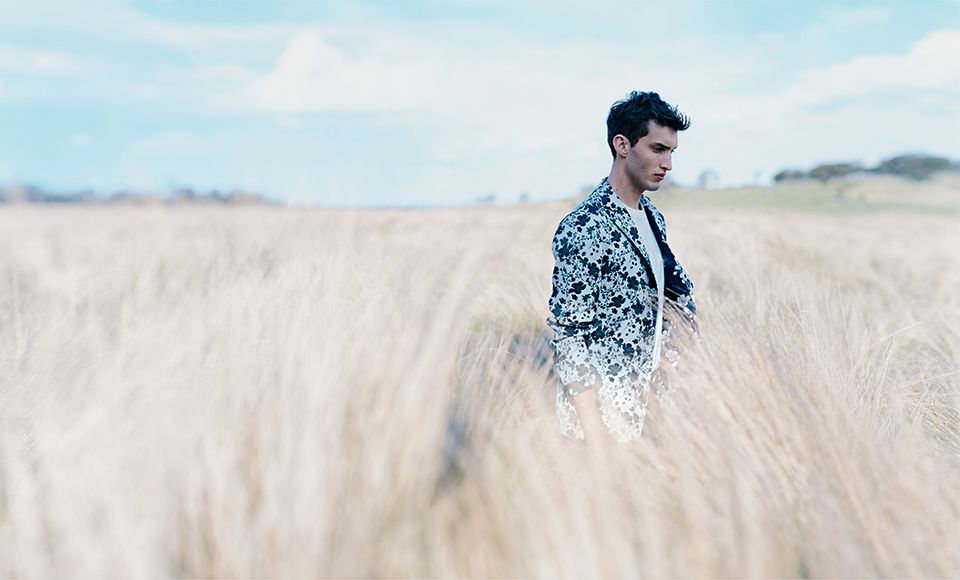
Hermes 2016 spring. summer © YOSHIHIKO UEDA
I had no intention to get into commercial photography.
I did, at the time, want to work for a fashion magazine called Ryuko Tsushin. I was interested in shooting portraits, not fashion. So, I showed some of my photos to the editors at the magazine, and the next day they asked me to do a shoot. I remember being ecstatic when I got that job.
From then on, without much deliberation on my part, I began taking fashion photographs. Not long after, I met the wonderful editor of Marie Claire, another fashion magazine, who asked me to shoot a feature spread on the spot. That fateful feature would later lead me to Yohji Yamamoto.
My ad work began with Kaoru Kasai and a newspaper ad for Suntory that used a portrait photo.
It's like I press the shutter unconsciously the moment my eyes and body are happy. This is called shooting from the hip, like a gunman who draws and fires in one rapid motion. I tell the students I teach at Tama Art University again and again that when you shoot, shoot without any thought at all, but when you select, think through everything consciously. In other words, shoot before your thoughts catch up with you. Otherwise the miracle moments will vanish while you are thinking.
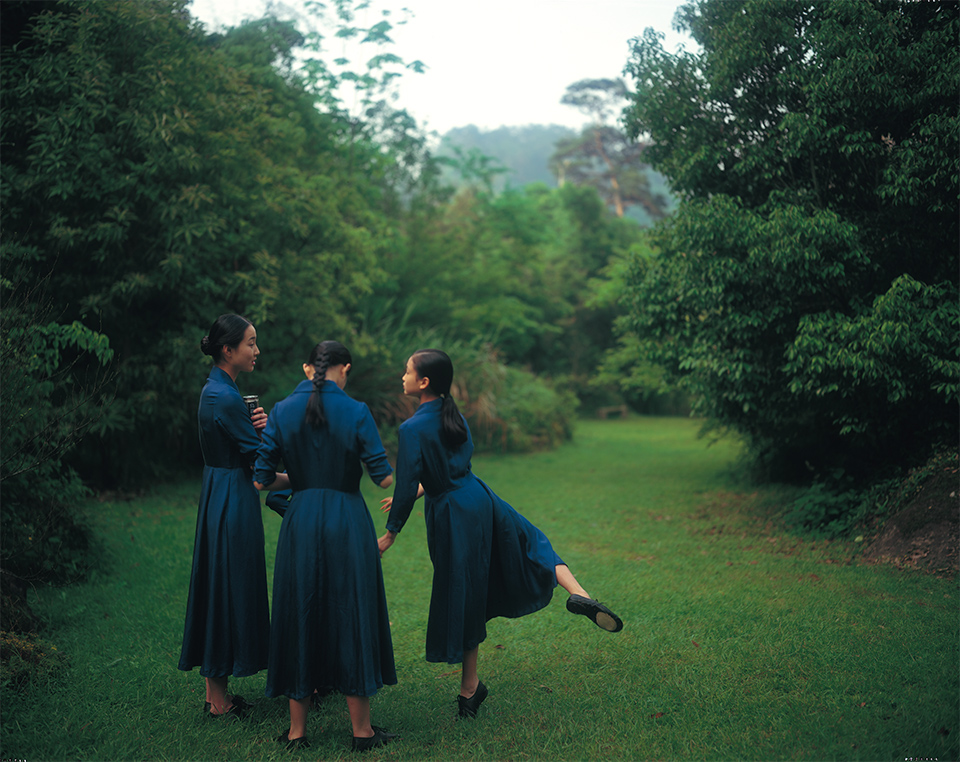
suntory, Oolong Tea , 1995 © YOSHIHIKO UEDA
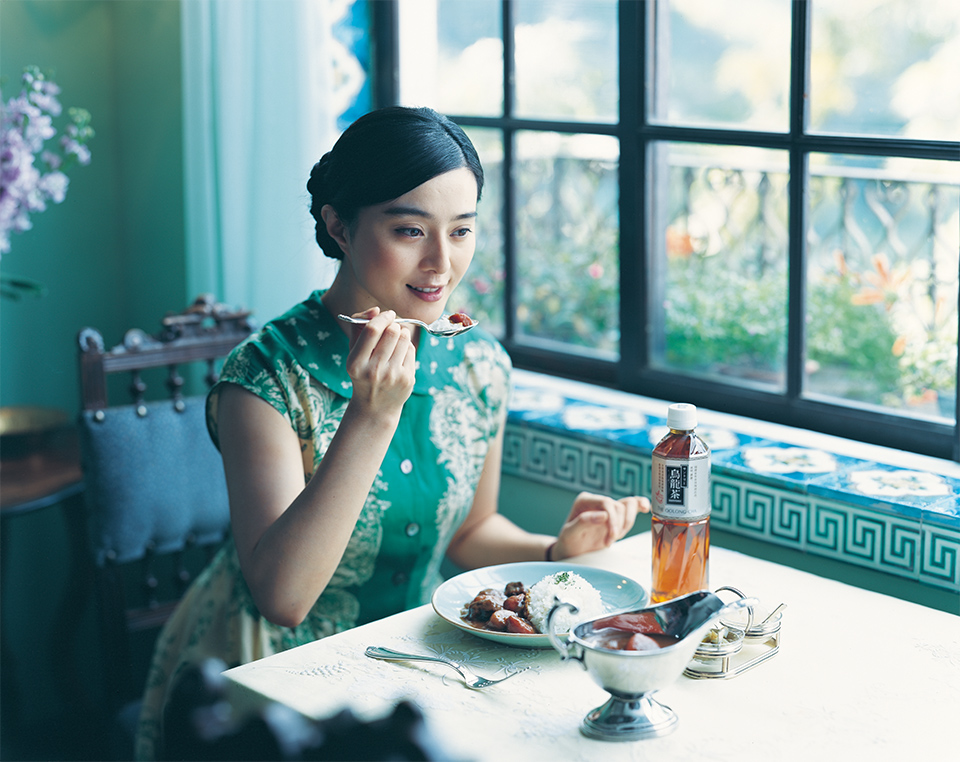
suntory, Oolong Tea , Fan Bingbing, 2011 © YOSHIHIKO UEDA
When you are shooting a person, there's a moment as I click the shutter when the subject twitches reflexively in reaction to my twitch. You can call this letting down your guard or an instant of selflessness. It's an ephemeral moment, whatever you call it. This doesn't happen readily as you aim and gaze directly at the subject, but moments do occur where you can see and feel the subject respond. In that millisecond, you have to click the shutter.
Shooting your family is a completely different ballgame. I try to shoot as discreetly as possible so they don't notice me. I want to capture them as they are in their everyday life. When kids are small, for instance, there are many times where if you don't photograph them now, you'll never see that moment again. If you miss the opportunity, you'll regret it forever. So, I keep a camera at the ready at home, where the conditions are ripe for such moments.
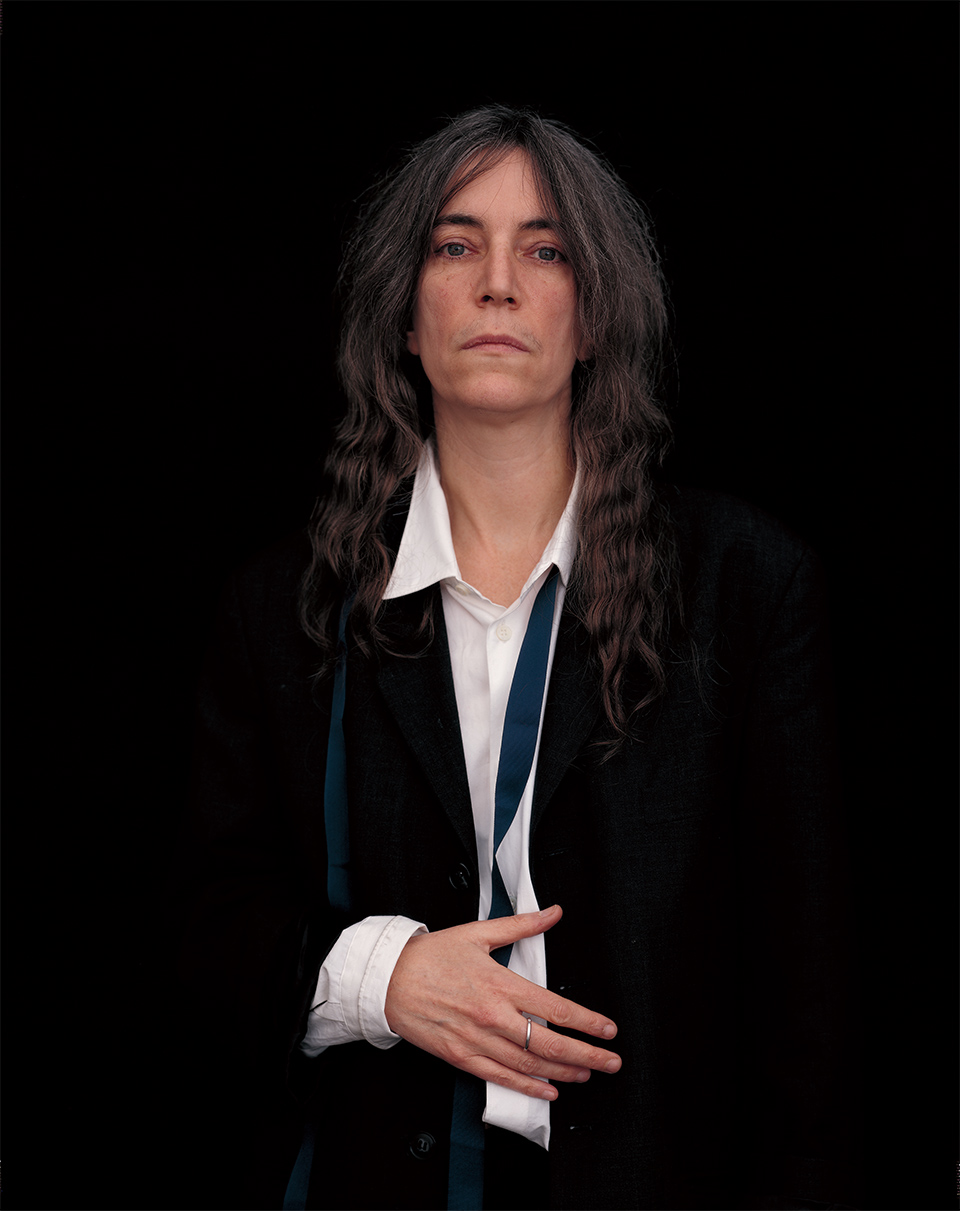
Patti Smith 1997 © YOSHIHIKO UEDA
For Hermes ad, for example, there were about 30 staff members around. With commercials, there can be as many as 50 people on location. We have a lot of meetings beforehand and make the ad together with everyone.
Quite the opposite. It's a battle.
I want everything about a shoot to proceed in a way that I'm satisfied with. So, when I'm overseeing the shoot, I pay attention to everything that will appear in the frame.
It depends on the situation. For advertisements, there is already a plan in place. How do we implement the plan or idea? How do we get it down in a video that will move people? The real joy of making advertisements is joining forces with lots of people and bringing the idea to fruition.
As for the advertisements I've been a part of, the [Suntory] oolong tea ads are my favorites. I've been doing them for about 20 years. From the outset, I decided to take the time and put my heart and soul into them, even over my own work.
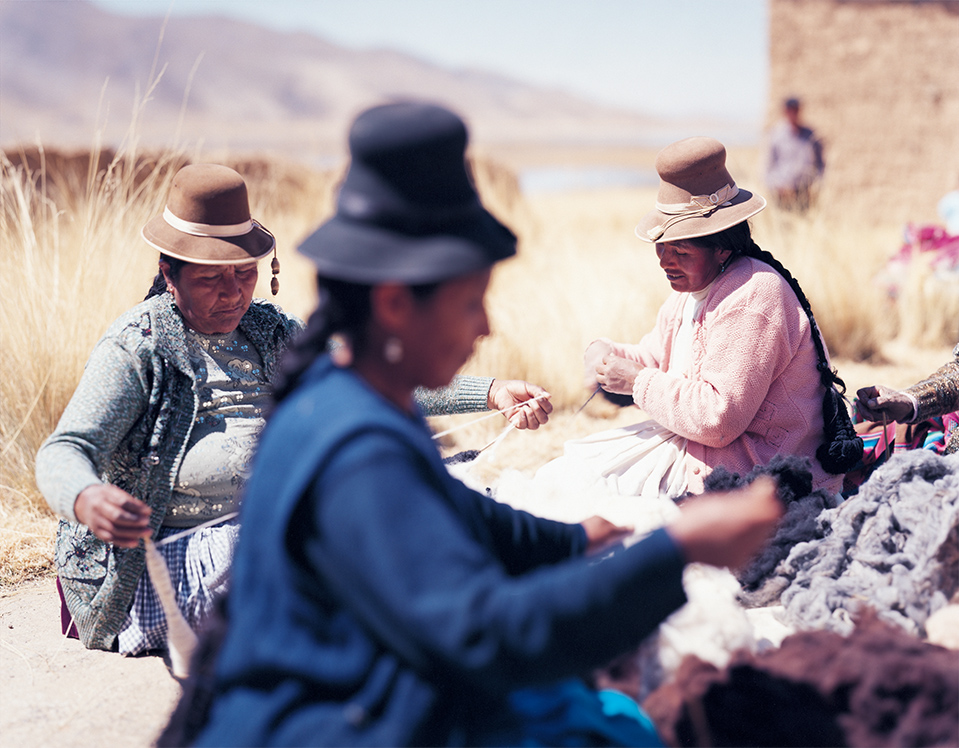
MUJI , Peru, 2012 © YOSHIHIKO UEDA
I go overseas throughout the year. In total, I spend about three months out of the year outside of Japan. I've transited in airports in so many different countries, that sometimes I don't even know where I am. [laughs]
No, nothing of the sort. I do, however, get terribly hung up on things I like. It's true of everyone, I presume, but I do what I like to the point of obsession. I don't accept anything I dislike, and that's fair enough, right?
The only ads I do are those I truly want to do. Because I take this stance, the finished product always resonates someone in some way and vice-versa. Everyone together creates the ads, but they also become something precious to me. That's why once I decide to do an ad, I never compromise.
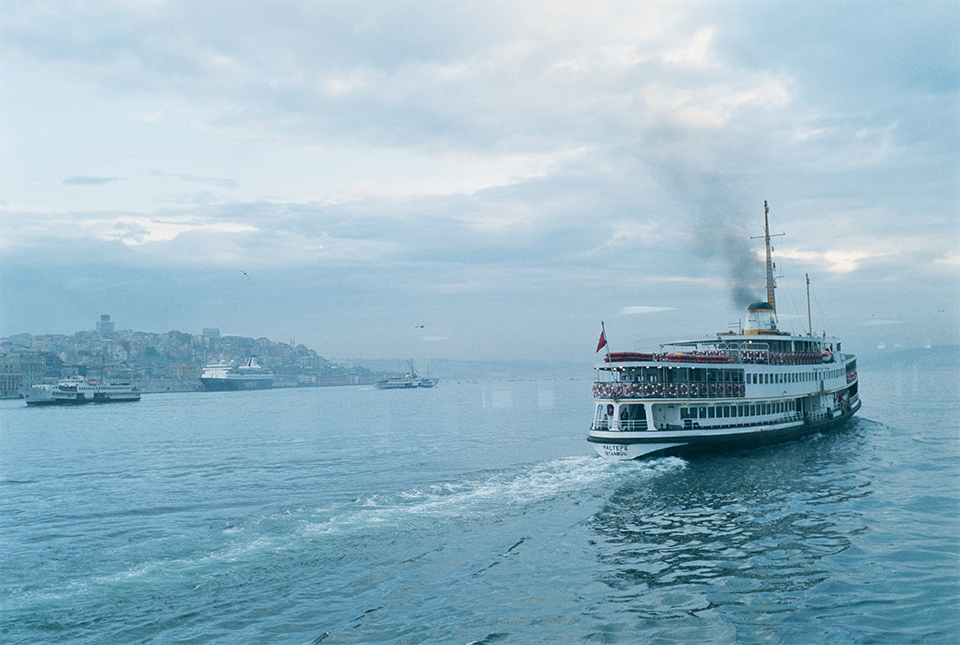
Istanbul 2008 © YOSHIHIKO UEDA
There's no stopping the changing times, and there's nothing any one of us can do. I, personally, can't come down one way or the other on how photography will change. What is up to you is how you make use of the changes and the new things they bring. I carry a cellphone like everyone else. And sometimes I feel instinctively that a certain shot will come out better with a cellphone. When I get this sensation, I snap away with my cellphone with no particular fuss. The upshot is interesting photos that only a cellphone could take. It's a completely normal act of life that people living in this age learn naturally.
I don't think I have a set style of taking photographs... This may sound odd, but I sometimes see myself as a mirror that reflects the world. I'm always conscious of trying to make myself an empty vessel. I don't reject the things that affect me in my life — I reflect them. My photography has emerged in the midst of this spontaneously.
I feel like I, my unchanged self, stand at the center while everything around me continuously changes, what with getting married and having children. At the same time, I feel my world has steadily gotten larger. Looking back, I can't believe all of a sudden I turned 60 years old, when I was just 30 not so long ago. That's the world we live in. So, I have no set technique; I take things in and reflect them.
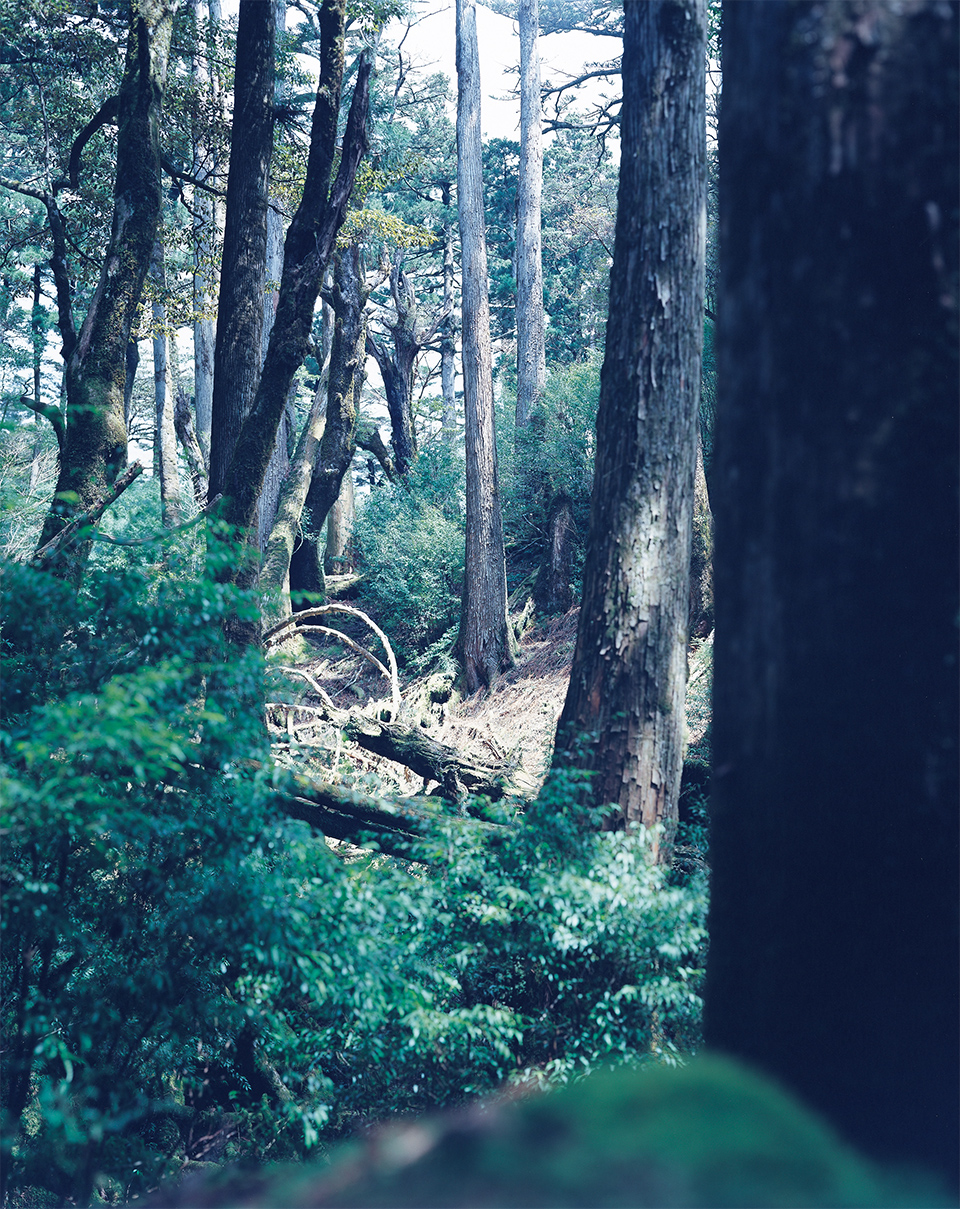
Materia No.5 2011 From <Materiae> © YOSHIHIKO UEDA
I suggest people should not get too caught up in which current photograph style or photographers are in the limelight or where photography is headed. Each person has their way of living and their own inherent thoughts, and without fail these will show up in their photographs. Over time, each person's unique worldview will start to seep into their work. Those are the photographs I want to see.
A photograph capturing something that transcends the photographer's own thoughts or ideas. Such a photograph has the power to become a universal photograph. Naturally, the photographer's talent is what calls the photograph into being, because the photographer is the one who actually presses the shutter. But a photograph that surprises the person who took it — that's a great photograph in my opinion.
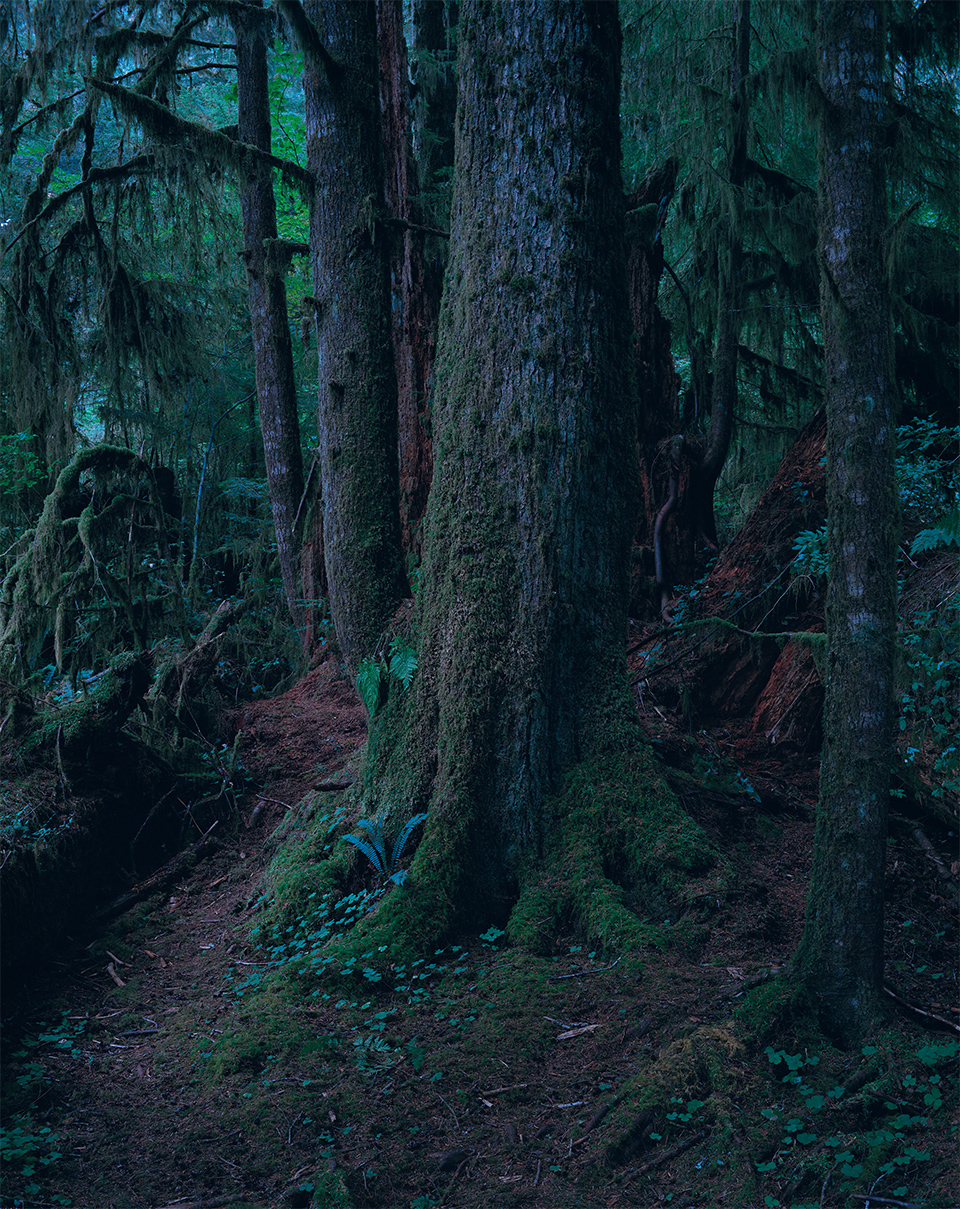
Quinault No.39 1990–1991 From <Materiae> © YOSHIHIKO UEDA
I have five publications planned, three new works and two ongoing works. [Two of these have now been published: Apple Tree (Akaaka, 2017) and Forest Impressions and Memories, 1989–2017 (Seigensha, 2018).]
I want to take portraits again.
I have some ideas, but I can't say anything yet. [laughs]

From <Apple Tree> © YOSHIHIKO UEDA
Born in 1957, Mr. Ueda is a photographer and professor at Tama Art University. Recognition for his work includes the Tokyo Art Directors Club Grand Prize, the New York Art Directors Club Photography Award, the Cannes Lions International Festival of Creativity Silver Lion, the Asahi Advertising Award, and the Photographic Society of Japan Lifetime Achievement Award.
Among his most noted works are Quinault, a collection of photos of a sacred Native American rainforest; Amagatsu, a series of portraits of Sankai Juku dancer-choreographer Ushio Amagatsu; At Home, intimate snapshots of Mr. Ueda's own family; and Materia, images of primeval forest on the theme of the origin of life. In 2015, he published A Life With Camera, a wide-ranging retrospective of his work spanning more than 30 years. Mr. Ueda has been the curator of Gallery916 since 2011.